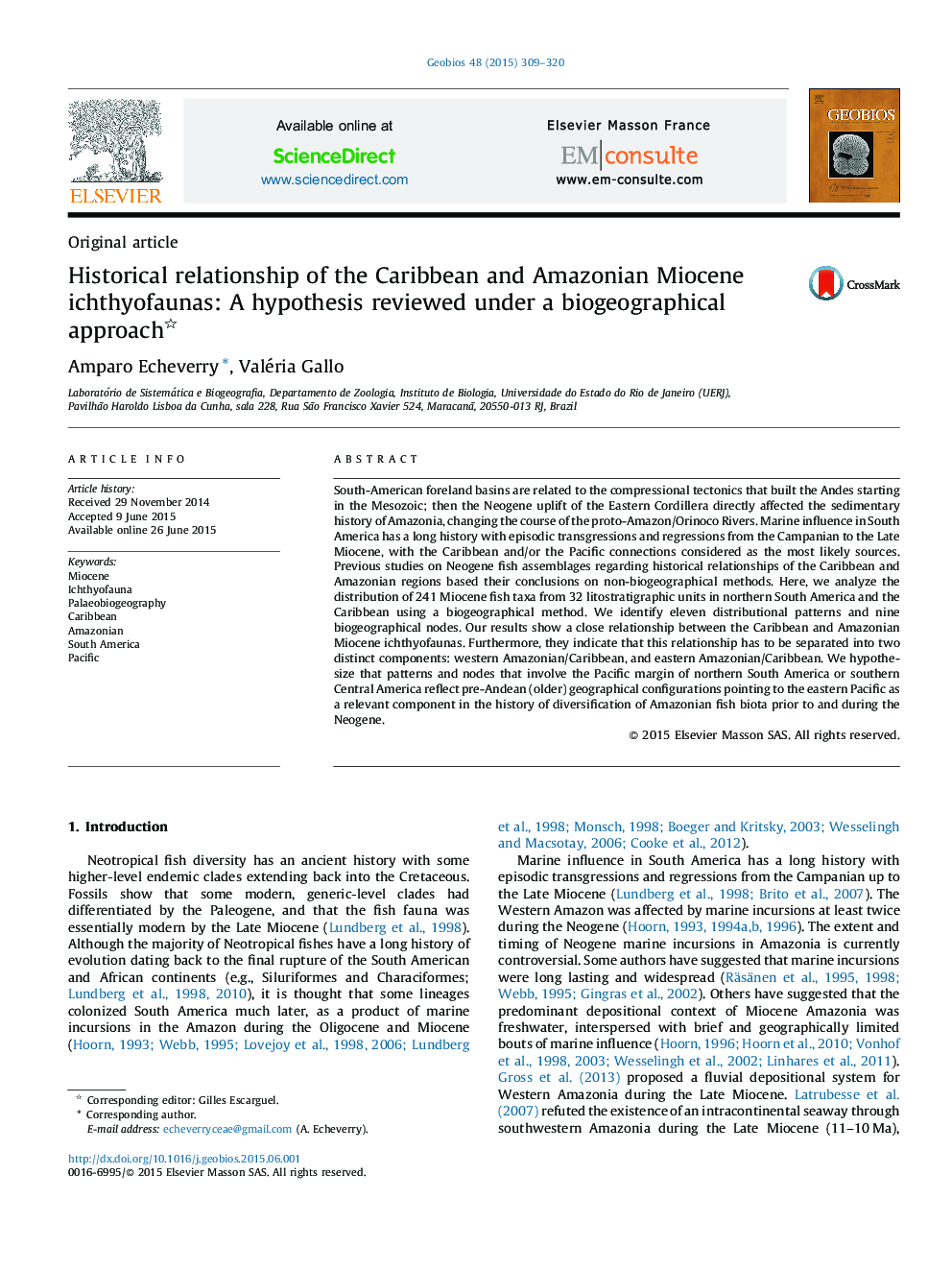| کد مقاله | کد نشریه | سال انتشار | مقاله انگلیسی | نسخه تمام متن |
|---|---|---|---|---|
| 4748028 | 1360074 | 2015 | 12 صفحه PDF | دانلود رایگان |
South-American foreland basins are related to the compressional tectonics that built the Andes starting in the Mesozoic; then the Neogene uplift of the Eastern Cordillera directly affected the sedimentary history of Amazonia, changing the course of the proto-Amazon/Orinoco Rivers. Marine influence in South America has a long history with episodic transgressions and regressions from the Campanian to the Late Miocene, with the Caribbean and/or the Pacific connections considered as the most likely sources. Previous studies on Neogene fish assemblages regarding historical relationships of the Caribbean and Amazonian regions based their conclusions on non-biogeographical methods. Here, we analyze the distribution of 241 Miocene fish taxa from 32 litostratigraphic units in northern South America and the Caribbean using a biogeographical method. We identify eleven distributional patterns and nine biogeographical nodes. Our results show a close relationship between the Caribbean and Amazonian Miocene ichthyofaunas. Furthermore, they indicate that this relationship has to be separated into two distinct components: western Amazonian/Caribbean, and eastern Amazonian/Caribbean. We hypothesize that patterns and nodes that involve the Pacific margin of northern South America or southern Central America reflect pre-Andean (older) geographical configurations pointing to the eastern Pacific as a relevant component in the history of diversification of Amazonian fish biota prior to and during the Neogene.
Journal: Geobios - Volume 48, Issue 4, July–September 2015, Pages 309–320
